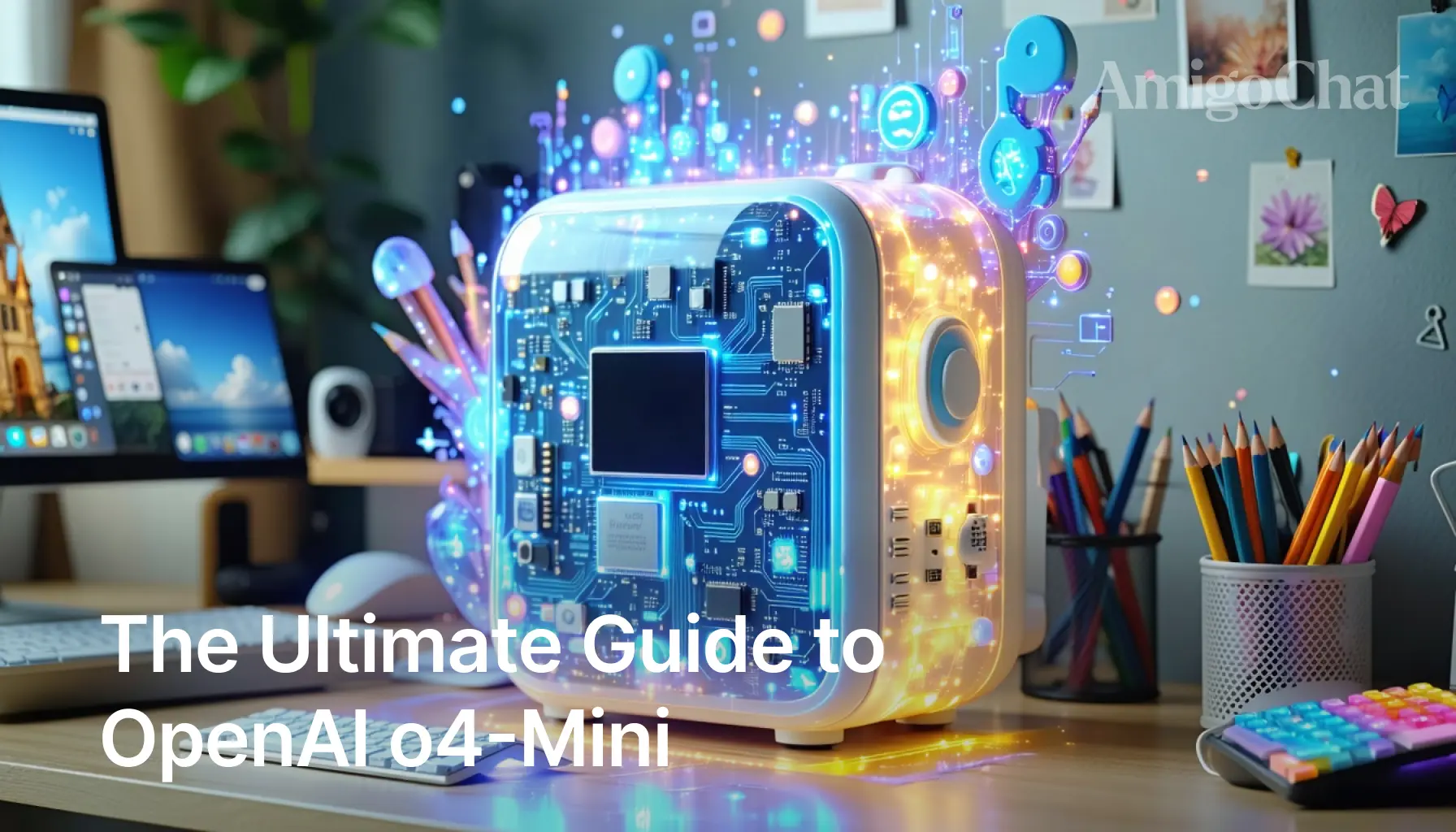





200.000 users trusted
OpenAI o4-mini
Compact multimodal model designed for speed, affordability, and performance







o4-mini for Everyone

Content Creators

Educators

Businesses

Software Developers

Data Scientists

Healthcare Professionals
Introducing OpenAI o4-mini: Small Model, Smart Results
OpenAI introduced o4-mini, a lightweight yet powerful multimodal AI model designed for efficiency, performance, and accessibility. Building upon the GPT-4 and GPT-4 Turbo architectures, o4-mini delivers robust capabilities in text understanding, image reasoning, coding, and multilingual processing—all optimized for low-latency deployment and cost-effective inference.
o4-mini is part of the fourth-generation series of models developed by OpenAI, intended to serve as a compact, efficient alternative to larger models like GPT-4o. Despite its smaller parameter count and compute footprint, it retains impressive performance across a broad range of tasks. It is currently available for use via AmigoChat.
Architecture and Performance
o4-mini is based on a refined transformer design optimized for fast inference and minimal hardware usage. It supports native multimodal inputs, allowing it to process and reason across text, images, and visual documents. The model features:
- High throughput on limited hardware: Performs smoothly on CPUs and edge devices with limited GPU memory.
- Multimodal token fusion: Processes text and images in a unified token space, reducing latency and improving coherence.
- Improved visual understanding: o4-mini outperforms GPT-3.5 and Gemini 1.5 Flash in vision benchmarks like MMMU and ChartQA.
- Multilingual fluency: Demonstrates strong performance on Multilingual MMLU and other cross-lingual benchmarks.
Benchmarks and Comparison
Despite its compact size, o4-mini ranks competitively in multiple benchmarks:
- MMMU (Visual Reasoning): 72.9 — ahead of Claude 3 Haiku and Gemini 1.5 Flash.
- ChartQA: 89.2 — surpassing GPT-4 Turbo.
- MMLU (Textual Reasoning): 76.4 — comparable to earlier GPT-4 variants.
- Multilingual MMLU: 82.7 — strong cross-language comprehension.
- LiveCodeBench (Coding Tasks): 41.8 — outperforming many mid-range models.
Training Techniques
o4-mini benefits from OpenAI’s new training pipeline, incorporating techniques such as:
- Parallelized Code Distillation: Learns from high-capacity models like GPT-4o and GPT-4 Turbo, using dynamic loss weighting to mimic higher-level reasoning.
- Vision+Language Contrastive Learning: Trains the visual encoder and language model in tandem, improving image-text alignment.
- RLHF Optimized for Low-Latency Models: Reinforcement learning techniques adapted specifically for low-weight architectures.
Deployment and Access
o4-mini is already integrated into:
- AmigoChat: Powering fast, visually-aware AI chat interactions with low compute cost.
The model is ideal for teams and developers seeking intelligent behavior without the overhead of larger models. In mobile applications, web services, and edge inference scenarios, o4-mini provides a sweet spot between power and efficiency.
Best AI models available

Deepseek R1

OpenAI o3 mini

















.webp)








.webp)






.webp)

.webp)


.webp)

.webp)


.webp)





.webp)















